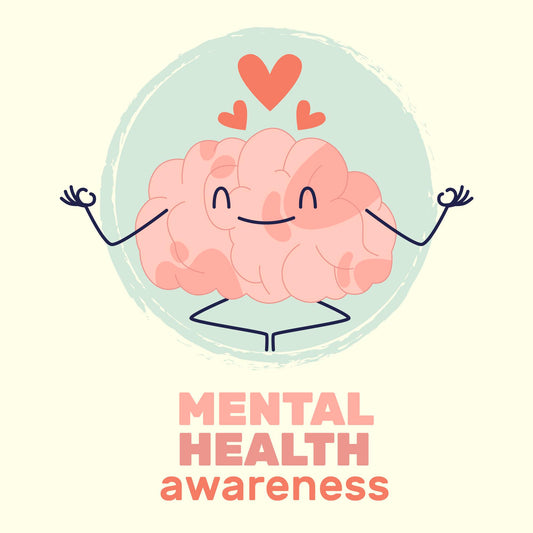Embarking on the path to a healthier heart requires dedication and the right set of exercises. In this comprehensive guide, we delve into a variety of dynamic and effective workouts specifically designed to boost cardiovascular health. These exercises, ranging from brisk walking to high-intensity interval training, are tailored to strengthen your heart, improve blood circulation, and increase overall endurance. Whether you're a fitness enthusiast or just beginning your journey towards better health, this guide offers valuable insights and practical tips to help you achieve a stronger, healthier heart.
Running or Jogging
This is a high-impact cardiovascular exercise that can be done outdoors or on a treadmill at home. Ideal to start with a moderate pace and gradually increase your speed and distance over time
Cycling
Whether it's outdoors or on a stationary bike, cycling is a low-impact exercise that can effectively improve cardiovascular health. Vary the intensity by incorporating sprints or cycling up hills for an added challenge.
Swimming
Swimming is the one of the best low-impact, full-body workout that puts less stress on the joints. It engages multiple muscle groups and helps improve cardiovascular endurance.
Skipping Rope
Jumping rope is a simple and inexpensive exercise that can be done anywhere. It provides a great cardiovascular workout, for balance exercises improves coordination, and burns calories effectively.
Dancing
Whether it's Zumba, hip-hop, or salsa, dancing is a fun and engaging way to improve cardiovascular health. It combines aerobic movements with music, making it an enjoyable exercise option.
Stair Climbing
Opt for taking the stairs instead of the elevator whenever possible, or use a stair climber machine at the gym. Climbing stairs is an effective way to elevate your heart rate and improve cardiovascular endurance.

So which cardio workout is the best?
The key to unlocking optimal cardiovascular health lies in selecting the right cardio workout tailored to your individual preferences, fitness objectives, and current physical condition.
Here's a concise guide to some top cardio exercises that effectively enhance heart health and aid in calorie burning:
Running/Jogging
This classic cardio staple, perfect for both outdoor paths and treadmills, excels in building endurance, fortifying lower body muscles, and burning calories efficiently.
Cycling
Engage in this low-impact yet powerful exercise either on a stationary bike indoors or by exploring the outdoors. Cycling not only boosts cardiovascular fitness but also strengthens leg muscles, with adjustable intensity to suit your needs.
Jump Rope
An easy-to-start, yet highly impactful workout, jump roping can be performed almost anywhere. It targets multiple muscle groups, sharpens coordination, and rapidly increases your heart rate.
Swimming
Dive into this gentle-on-the-joints, full-body workout. Swimming not only elevates cardiovascular fitness but also builds muscle strength and enhances flexibility, making it a comprehensive exercise choice.
The "best" cardio workout is one that resonates with you and can be consistently integrated into your routine. To maintain interest and challenge your body, consider experimenting with various activities and alternating your exercise regimen.
In my opinion
If I were to pick one exercise that is widely regarded as highly effective for cardiovascular health, it would be Running/Jogging* This exercise is excellent for improving heart health, building endurance, and burning calories efficiently. It's accessible, requires minimal equipment, and can be adapted to various fitness levels. Additionally, running has the added benefit of being a weight-bearing exercise, which is good for bone health.
Here's the visual representation of the four effective cardio workouts for heart health, each depicted in its own unique setting. This collage illustrates the diversity and effectiveness of these exercises for cardiovascular fitness.
Ultimately, the "best" cardio workout is one that you enjoy and can sustain over time. It's important to choose activities that align with your interests and fitness level to ensure consistency and long-term adherence to a cardio routine. Consider trying different exercises and varying your workouts to keep things interesting and challenge your body in different ways.

Why would I suggest this exercise
Running or jogging is often considered one of the best exercises for cardiovascular health for several key major reasons:
Aerobic Efficiency: Running is a high-intensity aerobic activity that significantly increases heart rate, which strengthens the heart muscle and improves overall cardiovascular endurance.
Calorie Burning: It's an effective way to burn calories quickly, aiding in weight management, which is closely linked to heart health.
Accessibility: Running requires no special equipment (aside from a good pair of shoes) and can be done almost anywhere, making it a highly accessible form of exercise.
Adaptability: It can be easily adapted to different fitness levels and goals. You can adjust the pace, distance, and terrain to suit your personal fitness level and gradually increase the intensity as your endurance improves.
Mental Health Benefits: Regular running or jogging has been shown to reduce stress, anxiety, and depression, all of which can have indirect benefits on cardiovascular health.
Bone Health: As a weight-bearing exercise, running helps in maintaining bone density, which is important for overall health.
Improved Blood Circulation and Lung Function: Running enhances blood circulation and lung capacity, contributing to better oxygen distribution throughout the body.
These are my main factors combined make running a top choice for improving and maintaining cardiovascular health. However, it's important to note that the best exercise is one that fits an individual's unique health circumstances, preferences, and goals. For some, other exercises might be more suitable, especially if they have specific health considerations or physical limitations.
Regular cardio exercise for a healthy heart
Incorporating regular cardio exercise into your routine is a cornerstone of a healthy heart plan. Here's a guideline to help you structure your cardio workouts effectively:
Frequency Aim for at least 150 minutes of moderate-intensity aerobic activity or 75 minutes of vigorous-intensity aerobic activity each week, as recommended by the American Heart Association. This can be broken down into 30 minutes a day, five times a week.
Types of Cardio Exercises
Include a variety of activities to keep your routine interesting and work different muscle groups. Options include:
- Brisk walking or jogging
- Cycling
- Swimming
- Aerobic classes
- Dancing
- Rowing
- Using an elliptical machine or stair climber
Intensity Levels
Vary the intensity of your workouts. Moderate-intensity activities should raise your heart rate and make you breathe faster yet still allow you to hold a conversation. Vigorous-intensity activities will significantly increase your heart rate and breathing, making conversation more challenging.
Progress Gradually
If you're new to regular exercise, start with shorter sessions and gradually increase duration, frequency, and intensity. This helps build endurance and strength without overwhelming your body.
Importance Warm-Up and Cool-Down
Begin each session with a 5 to 10-minute warm-up of light activity to prepare your body. End with a cool-down period and stretches to help your body recover.
Consistency is key. Make cardio a regular part of your routine and try to stick to a schedule as much as possible.
Monitoring
Pay attention to how your body responds during and after exercise. If you have any heart-related conditions, consult with your healthcare provider about the types and amounts of activity that are safe for you.
Incorporate Strength Training
Include strength training exercises at least two days a week. This complements your cardio routine and contributes to overall heart health.
Stay Hydrated and Eat Healthily Proper hydration and a balanced diet are crucial for supporting your exercise routine and overall heart health.
Listen to Your Body If you feel any discomfort or pain, especially in the chest area, shortness of breath, or extreme fatigue, stop exercising and consult a healthcare professional.
Remember, the best cardio exercise is one that you enjoy and can maintain long-term. It's about making sustainable lifestyle changes that contribute to a healthy heart.
You can avoid attempting a similar task until you become bored or completely quit. It is recommended to exercise twice weekly for 30 minutes. When attempting moderately-intensive exercises it is important to sweat and be slightly sneezed to keep up. Regular cardio exercise is crucial for maintaining a healthy heart. Engaging in activities such as running, cycling, swimming, or brisk walking can help improve cardiovascular fitness and reduce the risk of heart diseases. 
Cardio exercises work by increasing your heart rate, which strengthens your heart muscles and improves its efficiency. This, in turn, enhances blood circulation, lowers blood pressure, and reduces the risk of developing conditions like hypertension and stroke.
In addition to cardiovascular benefits, regular cardio exercise also aids in weight management. It helps burn calories and reduce fat,, promoting a healthy body weight and reducing the risk of obesity-related health issues, including diabetes and joint problems.
To maximize the benefits of cardio exercise, it is important to choose activities that you enjoy and can sustain over time. This will help you stay motivated and consistent in your fitness routine. Varying your exercises can also prevent boredom and target different muscle groups.
In summary, incorporating regular cardio exercise into your fitness routine is essential for maintaining a healthy heart. It not only improves cardiovascular fitness but also aids in weight management and reduces the risk of various health conditions associated with a sedentary lifestyle.

What kind of exercise heart helps your heart work more efficiently? Here are the four types of heart-healthy workouts
Almost every activity helps improve heart health. But improving your cardio strength and flexibility is a fast and very effective way of achieving good health and fitness. Below is a list of the different types of heart health exercises:
Four types of heart-healthy workouts that help your heart work more efficiently are cardio exercises, strength training, interval training, and low-impact exercises.
Cardio exercise
These exercises increase your heart rate and improve cardiovascular fitness. They include activities like running, cycling, swimming, brisk walking, dancing, and aerobics. Cardio exercises help strengthen your heart, improve blood circulation, and increase lung capacity.
Strength training
While cardio exercises focus on the heart, strength training workouts help build muscle strength. This includes exercises using free weights, resistance bands, or weight machines. By increasing muscle mass, strength training indirectly benefits the heart by improving overall body composition and metabolism.
Interval training
This resistance training involves alternating between high-intensity bursts of exercise and periods of low-intensity recovery. For example, you can sprint for 30 seconds, followed by a 1-minute jog, and repeat. This type of workout challenges your cardiovascular system, increases endurance and improves heart rate variability.
Low-impact exercises
These workouts are gentle on the joints and are suitable for individuals with joint issues or who prefer a lower-impact option. Examples include walking, swimming, cycling, yoga, and Pilates. These exercises still provide cardiovascular benefits and improve overall fitness without putting excessive stress on the joints.
How long should you exercise Cardio for heart health
Exercise targets: Five times weekly to complete 2.5 hours of moderate exercise and 1.5 hours of vigorous exercise. Cardio may come to mind after exercise. Cardio is the activity that increases your blood flow, increases breathing speed, and reduces sweatiness in your muscles. Does cardio work? Yes! Because the heart is a muscle, working harder makes your muscles larger.
When you get bigger your heart beats less, causing less blood flow across the body, lower your blood pressure, which further, lower your blood pressure your blood pressure and reduces your heart rate. Cardiovascular exercise, commonly known as cardio, is an essential component of maintaining optimal heart health. Engaging in regular cardio workouts offers numerous benefits for your overall fitness and well-being. Here are some key points to consider:
Improved Heart Health: Cardio exercises, such as running, cycling, swimming, or brisk walking, help strengthen your heart muscle. Regular cardio workouts increase your heart rate, which improves blood circulation, lowers blood pressure, and reduces the risk of heart disease.
Weight Management: Cardio exercises are effective in burning calories, making them an excellent choice for weight management. By incorporating cardio into your fitness routine, you can create a calorie deficit, which can help in achieving and maintaining a healthy weight.
Enhanced Stamina and Endurance: Regular cardio workouts improve your lung capacity and oxygen utilization, leading to increased stamina and endurance. Over time, you will notice improvements in your ability to perform daily activities without feeling fatigued.Stress Reduction: Engaging in cardiovascular activities releases endorphins, also known as "feel-good" hormones, which reduce stress and elevate mood. Cardio exercises provide an opportunity to relieve mental tension and promote relaxation, leading to improved mental well-being.
Improved Sleep: Regular cardio workouts can positively impact your sleep quality. Physical activity helps regulate your body's internal clock and promotes a deeper and more restful sleep, allowing you to wake up feeling refreshed and energized.
Disease Prevention: Engaging in cardio exercises can help prevent various chronic conditions, including cardiovascular diseases, type 2 diabetes, and certain types of cancer. It also helps in managing existing health conditions by improving blood sugar control and reducing the risk of complications.
To incorporate cardio into your fitness routine, aim for at least 150 minutes of moderate-intensity aerobic activity or 75 minutes of vigorous-intensity activity per week. You can break this down into shorter sessions throughout the week based on your schedule and fitness level.
Remember to choose activities that you enjoy to make your cardio workouts more enjoyable and sustainable. It's also essential to warm up before starting any vigorous cardio exercise and gradually increase the intensity to avoid injuries.
Consulting with a healthcare professional or certified fitness trainer can provide personalized guidance and ensure that you engage in cardio exercises that are safe and appropriate for your current fitness level and any underlying health conditions you may have.
Measuring your heart rate
Most fitness devices include a heart rate sensor built into the device. How does one measure heart rate by using his wrist radially? Measuring your heart rate is an important aspect of monitoring your fitness and health. Your heart rate provides valuable information about your cardiovascular fitness and can indicate how efficiently your heart is working during exercise or rest.
There are several methods to measure your heart rate. One common and accessible way is to manually check your heart pumping with your pulse. You can do this by placing two fingers (usually the index and middle finger) on your wrist, just below the thumb, or on your neck, on the side where you can feel your pulse. Count the number of beats you feel within a set time frame, such as 15 seconds, and then multiply that number by four to get your heart rate in beats per minute (BPM).
Another convenient method is to use a heart rate monitor. These devices come in various forms such as chest straps resistance bands, wristbands, or smartwatches. They use sensors to detect and measure your heart rate accurately, providing real-time feedback on your heart rate during exercise or throughout the day. Many heart rate monitors also offer additional features like tracking your workouts, calories burned, and even providing personalized training recommendations based on your heart rate data.
Tracking your heart rate during exercise can help you determine if you are working at an appropriate intensity level. The American Heart Association recommends aiming for a target heart rate zone, typically 50-85% of your maximum heart rate, depending on your fitness goals. This zone ensures an effective workout without overexertion or inadequate effort.
Monitoring your heart rate during rest can also provide insights into your overall cardiovascular health. A consistently high or irregular resting heart rate may indicate underlying health issues that require further evaluation and medical attention.
It's important to note that heart rate varies among individuals based on factors such as age, fitness level, and genetics. Therefore, it's essential to establish a baseline and understand your own heart rate zones and what is normal for you.
In summary, measuring your heart rate is a valuable tool for assessing your fitness and health. Whether you choose to manually check your pulse or utilize a heart rate monitor, tracking your heart rate during exercise and rest can provide valuable insights, guide your workouts, and help you maintain a healthy cardiovascular system.

So now you have all the information you need to take yourself to the next level, lets identify pointers you will need to make sure you exercise safely and prevent yourself for injury.
All hearts have limits. What heart power you can handle will depend on age and health. But you must be careful when you exercise to achieve that goal. Keeping your heart safe during exercise is crucial for maintaining overall fitness and health.
Here are some important tips to consider:
Warm-up and Cool-down
Before starting any intense exercise, it is essential to warm up your body and gradually increase your heart rate. A proper warm-up prepares your muscles and cardiovascular system for the upcoming activity. Similarly, cooling down after vigorous exercise also helps your body recover and gradually return your heart rate to its resting state.
Know your Target Heart Rate
Understanding your target heart rate zone is important for monitoring the intensity of your exercise. It is generally recommended to aim for 50-85% of your maximum heart rate during workouts. This can be calculated roughly by subtracting your age from 220. Monitoring your heart rate during exercise can help you stay within a safe range and avoid overexertion.
Listen to Your Body
Pay attention to any warning signs or symptoms during exercise. These symptoms may indicate an underlying heart condition that needs to be addressed.
They can provide specific guidelines and recommendations tailored to your individual needs, ensuring you exercise safely.
Choose Low-Impact Exercises
If you have concerns about the impact of exercise on your heart, opt for low-impact activities like walking, swimming, cycling, or using an elliptical machine. These exercises are gentle on the joints and provide cardiovascular benefits without excessive strain on the heart.
Stay Hydrated
Adequate hydration is essential for cardiovascular health, especially during exercise. Make sure to drink water before, during, and after your workouts to maintain optimal hydration levels. Dehydration can put additional stress on the heart and increase the risk of complications.
Gradually Increase Intensity
If you are new to exercise or returning after a period of inactivity, it is important to gradually increase the intensity and duration of your workouts. Pushing yourself too hard too soon can put undue stress on your heart. Start with shorter, less intense workouts and gradually progress as your fitness level improves.
Selecting an aerobic exercise that sparks joy and keeps you engaged is the secret to unlocking its full benefits. When you find an activity you love, sticking to it becomes a delightful part of your routine rather than a chore. Aim to immerse yourself in at least 150 minutes of moderate-intensity aerobic magic each week, or dive into 75 minutes of vigorous-intensity workouts that make your heart sing. Remember, the best exercise is not just about duration; it's about passion, persistence, and the joy of movement.








